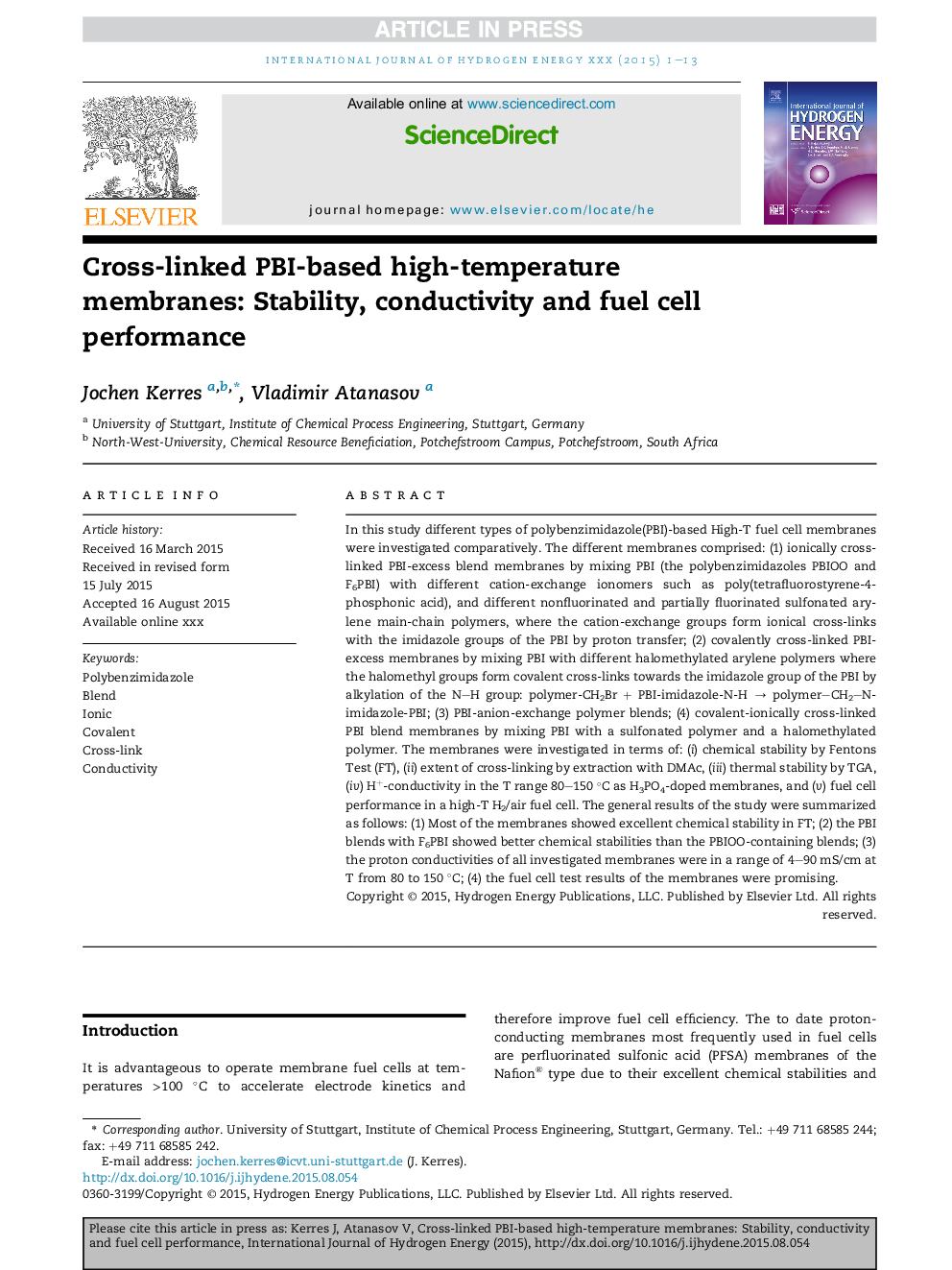| Article ID | Journal | Published Year | Pages | File Type |
|---|---|---|---|---|
| 7713855 | International Journal of Hydrogen Energy | 2015 | 13 Pages |
Abstract
In this study different types of polybenzimidazole(PBI)-based High-T fuel cell membranes were investigated comparatively. The different membranes comprised: (1) ionically cross-linked PBI-excess blend membranes by mixing PBI (the polybenzimidazoles PBIOO and F6PBI) with different cation-exchange ionomers such as poly(tetrafluorostyrene-4-phosphonic acid), and different nonfluorinated and partially fluorinated sulfonated arylene main-chain polymers, where the cation-exchange groups form ionical cross-links with the imidazole groups of the PBI by proton transfer; (2) covalently cross-linked PBI-excess membranes by mixing PBI with different halomethylated arylene polymers where the halomethyl groups form covalent cross-links towards the imidazole group of the PBI by alkylation of the N-H group: polymer-CH2Br + PBI-imidazole-N-H â polymer-CH2-N-imidazole-PBI; (3) PBI-anion-exchange polymer blends; (4) covalent-ionically cross-linked PBI blend membranes by mixing PBI with a sulfonated polymer and a halomethylated polymer. The membranes were investigated in terms of: (i) chemical stability by Fentons Test (FT), (ii) extent of cross-linking by extraction with DMAc, (iii) thermal stability by TGA, (iv) H+-conductivity in the T range 80-150 °C as H3PO4-doped membranes, and (v) fuel cell performance in a high-T H2/air fuel cell. The general results of the study were summarized as follows: (1) Most of the membranes showed excellent chemical stability in FT; (2) the PBI blends with F6PBI showed better chemical stabilities than the PBIOO-containing blends; (3) the proton conductivities of all investigated membranes were in a range of 4-90 mS/cm at T from 80 to 150 °C; (4) the fuel cell test results of the membranes were promising.
Related Topics
Physical Sciences and Engineering
Chemistry
Electrochemistry
Authors
Jochen Kerres, Vladimir Atanasov,
